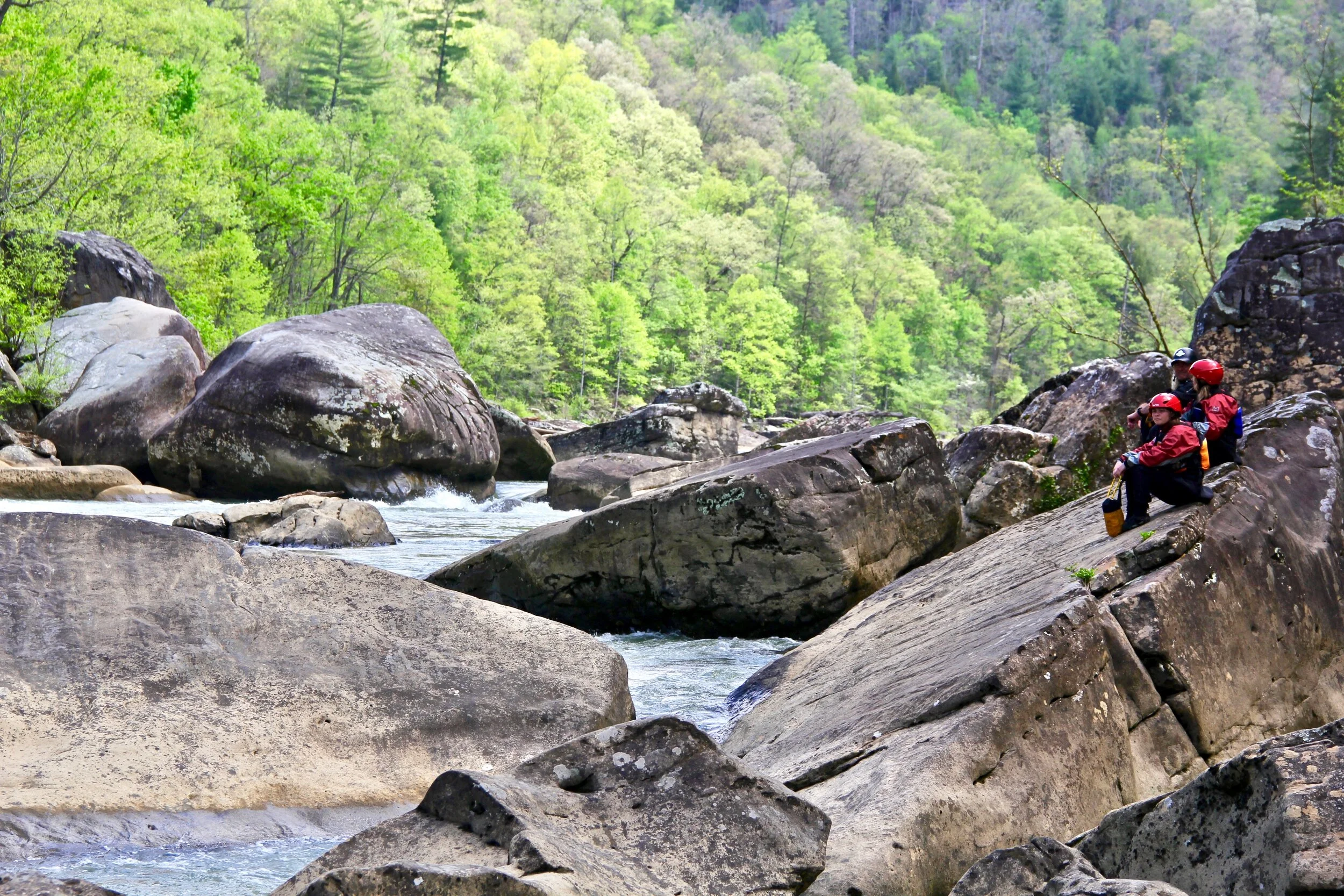Overcoming Barriers: Working With Our Fear
Mike Smith | OSI Executive Director
Of all the personal barriers we face to regularly participating in outdoor sports, none may be more common than fear. Be it fear of discomfort, fear of injury, or even fear of embarrassment, outdoor sports can often bring us up close and personal with this strong emotion that we’d all likely be happier to avoid.
In this post, we want to tackle what we can do when our experience outdoors takes us beyond our “flow” and into the realm of fear and anxiety.
Identifying Fear
Before we go any further it’s worth taking a moment to talk about how we know we’re scared. That seems obvious, right? Not always…
Observe It sounds simple, but we need to pay attention. Often, we display obvious signs of stress without being aware of it. Perhaps we become very talkative or very quiet. Paying attention to our breath can tell us a lot about how we’re feeling. Are our breaths suddenly shorter and shallower? Are we maybe not even breathing at all? These are natural signs of stress from our nervous system that are worth noting.
In our typically-comfortable lives we don’t regularly experience what it’s like to try something that feels scary (in fact, we usually try to avoid it). Biking through the woods, paddling a rapid, or skiing down a hill can carry with it a sense of physical threat that brings on emotions we aren’t used to processing. This means fear, especially in a new environment, might actually present as something else we’re more familiar with such as agitation, feeling sick, or even indifference.
Check In With Ourselves It’s okay to ask ourselves if we’re feeling nervous, anxious, or scared. Taking a moment to develop some self-awareness can be hugely beneficial.
It’s possible that we don’t know we’re scared. The reality is that we are complex creatures and we don’t always know what is going to set us off. Sometimes we can hide our feelings, even from ourselves, until it just bubbles over. We may think we’re 100% okay, only to later realize that just showing up at the trailhead has us panicked.
I can still vividly recall going to my first swimming lessons. I was scared to death, and would be afraid simply sitting in the car on the way to the pool. The instructor had to coax me out from behind the bleachers and onto the pool deck. Just being near the water had me too scared to function.
(I’m happy to report that I got over my fear of the pool and the water…but I’m still a lousy swimmer.)
Now What?
Okay so we’ve got some tools to help us be more vigilant about our emotional state, and now we realize we’re scared. Now what?
Own It First and foremost, it’s helpful just to acknowledge what we are feeling. Fear is one of those emotions that we tend to work really hard to avoid. With fear can also come an unnecessary feeling of shame or embarrassment. We can unintentionally reinforce those feelings when we’re told “you don’t need to be afraid,” as if being afraid is wrong. Instead, I like to talk openly about fear, and identify when I feel scared, and how much fear can be functional, even useful, versus debilitating.
Fear is a tool we can use, but first we have to welcome it and understand it. I try to avoid telling people what they should and shouldn’t find scary. Instead, I help them identify what they do and don’t find scary and why.
Change the Environment Finding our “flow state” requires matching the right environment with the right skill. You’ve probably heard the example of a pro skier getting bored on the bunny slope, and a novice getting terrified on a double black diamond descent.
One of the easiest things we can do to mitigate fear is seek out mellower terrain. We might think we picked the perfect place to work on downhill step turns on XC skis, but maybe any amount of downhill is too much for where we’re at. Can we take it back to the flats and start there?
Simplify the Task Alternatively, can we make the task easier? Maybe that downhill is what we need, but we should start by sliding with parallel skis, or even sliding on our butt, before trying to step around a corner.
With whitewater kayaking, one of the ways I often simplify the task for someone who is feeling fear is by removing the paddle and just having them float downstream. You might think that would increase anxiety, and it might if the environment isn’t right. However, the goal is to bring them back to basics - in this case just focusing on taking calm breaths and looking around. The paddle can be a place where new paddlers focus their energy and anxiety. By removing it, I’ve simplified what they need to focus on, and it can help them realize they can just relax. It’s worth noting, though, to do this requires making sure we’ve selected the appropriate terrain.
We Have a Choice Few things can make us feel more scared and anxious than feeling like we have no control. If we’re in the red zone it might be helpful to remember that we have a choice - we don’t have to do the thing we’re attempting right at this moment. There’s power in choice, and reminding ourselves we have control can be helpful.
Take a Break Learning is a neurological process, and neurological processes take energy and can be exhausting. Add in strong emotions and we can get incredibly fatigued. Sometimes, the best thing to do is to give ourselves more time to get comfortable with what we’re experiencing.
What to Avoid
This discussion wouldn’t be complete without mentioning some of the approaches to working with fear that should be avoided.
Operate Scared We’re all familiar with the classic Hollywood storyline of overcoming fear to discover a personal sense of strength and power. We might know there’s positive benefit on the other side of the fear we are feeling, but forcing ourselves to do something when we’re too scared isn’t the answer. All this does is reinforce a physical and emotional pattern where we equate being freaked out with performing. Instead, we need to be able to focus and relax to find our flow.
I might be nervous looking at a line I’m about to paddle, ski, or ride, but those nerves should fade into the background the moment I make my first move. If they don’t, I’m dealing with too much fear, and it’s not productive.
Do It For the “Likes” This goes right along with operating scared. The boost of energy or motivation you might get from thinking about how cool something will look online doesn’t actually override your fear. So again, if we can’t find focus and relax into the task we’re performing, we’re not reinforcing a physical and emotional pattern that will help us improve. No amount of likes or followers is going to help us learn.
Don’t Give Up Given enough time learning outdoor sports, eventually we’ll all experience fear and anxiety. It’s easy to think “maybe this sport isn’t for me.” The reality is we might not decide to pursue every sport we try, and that’s totally okay. The most important thing we can do for ourselves though, is to be honest about where we’re at, be patient with ourselves, and be okay with stepping down a notch or two if we’re dealing with too much fear.
It’s easy to be freaked out about an activity and decide we won’t go far with it. The real fun starts, though, when we find our flow, discover our fear, and lean into it.

